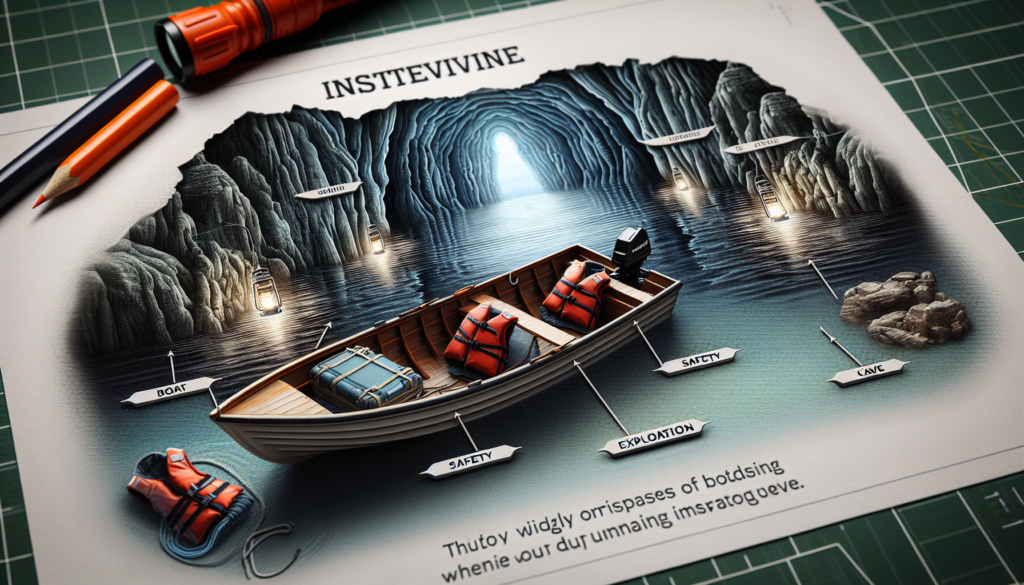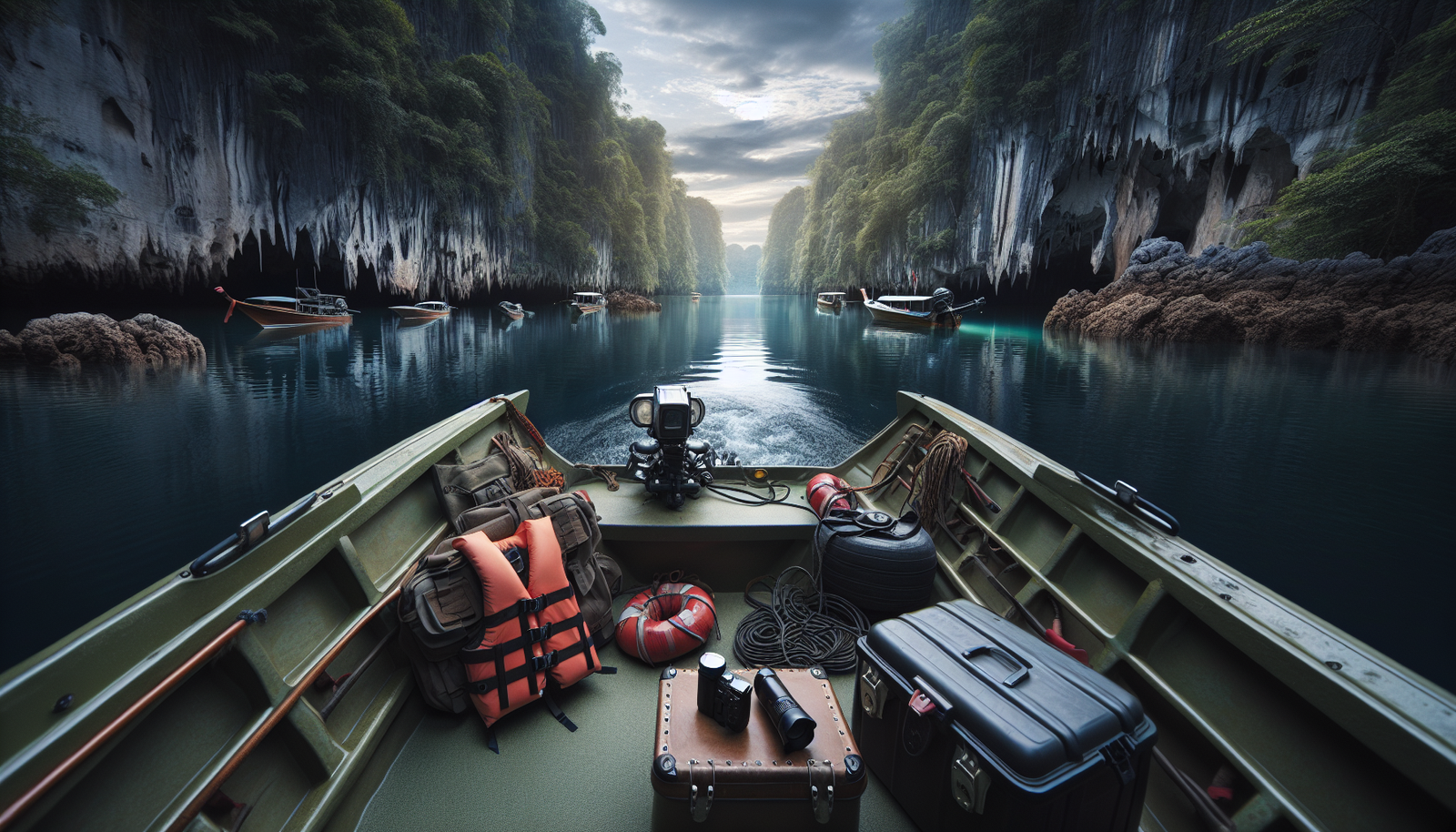Prepare to embark on a thrilling adventure, edging your vessel through the hushed darkness of water-bound caves. Your heart surges with a heady mix of fear and excitement as you navigate these secret, subterranean channels. The article “Boating Safety Tips for Exploring Caves by Water” seamlessly melds the thrill of discovery with the crucial aspect of safety, ensuring your voyage amidst ancient geological wonders remains unforgettable – for all the right reasons. Steer through the twin realms of adventure and safety with this comprehensive guide created for intrepid explorers like yourself.

Understanding the Basics of Boating Safety
Navigating the open seas or leisurely coasting along a calm lake requires a fundamental understanding of boating safety. It’s not just about donning a life vest – it encompasses the knowledge of basic rules, familiarity with boating terms, and a thorough inspection of your boat before use.
Learning the Basic Rules of Boating
Boating is governed by a set of rules designed to prevent mishaps and ensure a secure journey for everyone on board. You should give way to other vessels in certain situations to avoid collisions. Understand the navigation lights and day markers. Keep a professional lookout for any potential dangers, bearing in mind the speed and course changes.
Familiarizing with Common Boating Terms
To enhance your boating safety, familiarize yourself with common boating jargon. Terms like ‘port’ and ‘starboard’, ‘bow’ and ‘stern’, ‘aft’ and ‘fore’, or ‘draft’ and ‘beam’ may seem confusing in the beginning but hold significant importance while communicating aboard.
Inspecting Your Boat Before Use
Prepping your boat for a journey entails more than just filling up the fuel. Don’t forget essential equipment like sound signals, visual distress signals, and navigational lighting. An engine check and ensuring all seacocks are closed can save you from dangers you may encounter during your trip.
Selecting the Right Boat for Cave Exploration
Cave exploration requires a particular type of vessels, specific to the activity’s needs. The boat’s suitability, understanding its limitations, and checking for stability and buoyancy play crucial roles.
Suitable Boat Types for Cave Exploration
For cave exploration, choose a small, maneuverable boat like a kayak or a canoe. These boats allow for easy navigation in the narrow and sometimes low-ceiling caves. They also promote a closer proximity to the water surface, enhancing the overall experience.
Understanding the Limitations of Your Boat
Every boat type has its unique abilities and limitations. For instance, kayaks are excellent for navigating small spaces, but they may not withstand rough currents. Hence, understanding the limitations of your boat before embarking on your cave exploration journey ensures optimum safety and enjoyment.
Importance of Checking for Boat Stability and Buoyancy
Before you sign up for that exciting cave exploration trip, ensure that your boat is stable and buoyant enough to support your weight along with essential gear. Your safety begins with a reliable boat foundation.
Preparation Before Cave Exploration
Preparing for a cave exploration trip involves a lot more than just loading up your boat. Consider factors such as weather forecast, tide schedule, and always remember to share your itinerary before stepping out.
Checking the Weather Forecast
The weather plays a significant role in defining your boating experience. Check accurate and up-to-date weather forecasts before you prospect a journey. Unpredictable and harsh weather conditions can make your boating expedition quite risky.
Having a Plan and Sharing Your Itinerary
Always plan your cave exploration trip and share your itinerary with someone not on the boat. It allows them to monitor your safe return and notify relevant authorities if you don’t return within a stipulated time.
Know the Tide Schedule
In coastal areas, tides can dramatically influence your exploration. Consulting a tide guide helps you plan your trip during the best tide conditions for your journey and can prevent any unwelcome surprises.
Essential Safety Gear for Cave Explorations by Water
Cave exploration necessitates essential safety gear that can ward off emergencies. This includes life jackets, a first aid kit, and equipment to weatherproof your journey.
Importance of Wearing Life Jackets
Life jackets are a crucial piece of safety equipment, and they should be worn at all times during your exploration. They keep you afloat in case of accidental slips or falls overboard, potentially saving your life.
Having a First Aid Kit On Board
A well-stocked first aid kit is essential for any water expedition. It could come in handy for treating cuts, stings, or other common injuries you may incur along your journey.
Water and Weatherproofing Equipment
Beyond the regular safety gear, also consider adjusting your equipment based on the weather. This might include a strong flashlight, extra batteries, and waterproof cases or bags for your gear.

Proper Navigation in Dark and Tight Spaces
Cave exploration challenges include navigating through dark and tight spaces while avoiding underwater obstacles. The thrill of the exploration also lies in successful navigation and handling under such circumstances.
Techniques for Navigating Dark Caves
Navigating through caves demands a highly developed sense of direction and spatial awareness. Keep your flashlight handy and maintain low speeds to watch out for any unexpected turns or sudden dead ends.
Handling the Boat in Tight Spaces
Tight spaces in caves require careful maneuvering of your boat. Keep calm, move slowly, and use short, controlled paddle strokes to maintain course and avoid harsh collisions.
Avoiding Underwater Obstacles
Underwater obstacles can be a significant hazard, especially in murky cave waters. Keep a keen eye out and use sound signals like sonars if available. Using a paddle to feel ahead can also be a useful method to avoid collisions.
Emergency Procedures while Exploring Caves
Despite all precautions, emergencies can occur. Understanding the SOS signal, managing boat issues, and dealing with injuries are some essential steps to handle emergency situations during cave exploration.
Understanding the SOS Signal
The SOS signal is universally recognized as a sign for help in emergencies. Flares, electronic distress signals, and bright lights can serve as visual SOS signals. Shouting or blowing a whistle can work as audible signals.
Managing Boat Issues in a Cave
If your boat ceases to perform as expected inside a cave, keep calm and assess the situation. If your boat leaks, use any waterproof material and tapes to make temporary fixes.
Dealing with Injuries during Cave Exploration
In case you get injured during your cave exploration, prioritize immediate first aid. For serious injuries, you should signal for help using the SOS signal and wait for a rescue team.
Dealing with Wildlife during Cave Exploration
Chances of encountering wildlife during cave exploration are high. Knowing how to minimize your disruption and how to handle an encounter with marine life or their stings and bites can ensure your exploration goes smoothly.
Disruption of Wildlife
Caves can act as homes for many marine creatures. It’s essential to respect their habitat while exploring. Keep your distance, minimize disturbances, and avoid feeding the wildlife.
Safety Measures Against Marine Life
In many places, it’s possible to encounter potentially dangerous marine life during cave exploration. Staying observant, understanding the gestures of aggression in local wildlife, and respecting their space can mitigate any untoward interactions.
Getting Stung or Bitten by Marine Creatures
In case a sting or bite does happen, it’s essential to remain calm. Get proficient in first aid treatments for the local marine fauna’s stings and bites, and equip your first aid kit accordingly.
Sustainable Practices in Cave Exploration
Engaging in cave exploration without harming the natural resources or the environment is the most responsible way to enjoy this thrilling activity.
Respect for Natural Resources
The cave ecology is delicate and even the smallest disturbances can have significant impacts. Respect the natural resources, don’t leave any trash, and always stay on designated paths.
Minimize Damage to Caves
Caves are geological treasures taking millions of years in the making. Do your part in preserving these marvels by refraining from touching stalactites or any other cave formations.
Take Nothing but Photos
The magnificent beauty of the caves can be tempting to bring home as souvenirs. However, the only memories you should carry are photographs. Leave everything just as you found it for others to enjoy.
Post Cave Exploration Procedure
After your thrilling cave exploration trip, remember to thoroughly clean your boat, address any sickness from the exploration, and reflect on your experiences.
Proper Cleaning and Maintenance of Boat after Cave Exploration
Ensure you clean your boat thoroughly removing any dirt, sediment, or fauna. Regular maintenance can also extend the life and improve the performance of your boat.
Handling Sickness Post Cave Exploration
Cave explorations may cause seasickness, claustrophobia, or other minor health issues. Rest, rehydrate, seek medical advice if needed and wait for your body to adapt before planning your next trip.
Taking a Boating Safety Course before Cave Exploration
Finally, taking a boating safety course before your cave exploration will equip you with necessary skills, knowledge of boating laws, and the best practices for a safe and enjoyable adventure.
Choosing a Reputable Boating Course
Choose a certified boating safety course that teaches essential knowledge, skills, and rescue procedures for boaters on any waterbody and in any weather conditions.
Benefits of Undergoing a Boating Safety Course
A boating safety course prepares you for various real-life scenarios you might encounter during your exploration. Moreover, it increases your confidence, skills, and proficiency as a boat operator.
Applicable Laws and Regulations for Boating
Understanding the regional boating laws, speed limits, protected areas, and regulations governing cave exploration is an ethical practice that can also keep you out of legal troubles.
The thrill of exploring caves by boat makes it a popular adventure sport. However, it also requires precise planning, a well-selected boat, and careful attention to safety measures. An educated boater who respects local wildlife and marine environments while venturing the caves will surely enjoy a rewarding and memorable experience.

